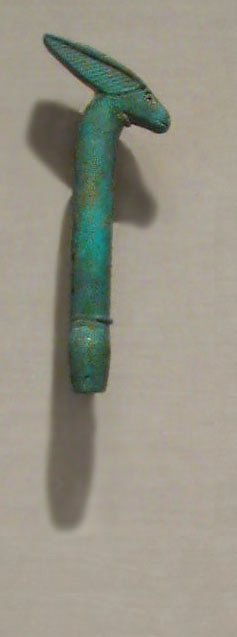Vessels with Blue-Painted Designs
"The most innovative pottery of Dynasty 18 - so-called blue painted ware-began under Thutmose III. The pastel pigment was made from ground up blue frit, a mixture of cobalt and alum. Initially, potters relied on blue paint to accentuate small details, such as the grape cluster hanging from a vine on the wine jar in this case. Over time, though, artists began to use blue paint for more complex designs and figures."
The Was-scepter is a symbol of power, and the Ankh symbolizes life. Banding with this type of decoration is found everywhere, on building walls, on mummy cartonnages, on furniture, anywhere that such might magically strengthen the user.

Cartonnage of Nespanetjerenpare, Third Intermediate Period
Possibly from Thebes, Charles Edwin Wilbour Fund

Was scepter found elsewhere in the museum, 37 1650E
Photos © Joan Lansberry, May 2008, vase detail May 2012
|







